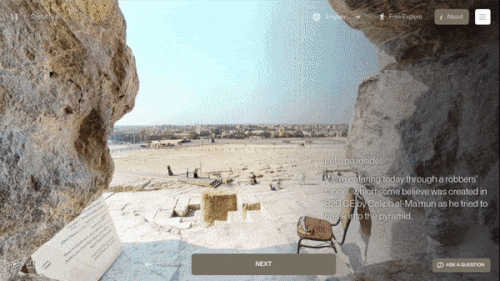Сообщения
Сообщения за ноябрь, 2022
England is No Longer a Christian Country
- Получить ссылку
- X
- Электронная почта
- Другие приложения
Explore Inside the Pyramid of Giza
- Получить ссылку
- X
- Электронная почта
- Другие приложения
Do You Live in A Disadvantaged Neighborhood?
- Получить ссылку
- X
- Электронная почта
- Другие приложения
The Future of Forests
- Получить ссылку
- X
- Электронная почта
- Другие приложения
The lutruwita place names map
- Получить ссылку
- X
- Электронная почта
- Другие приложения
The New FCC National Broadband Map
- Получить ссылку
- X
- Электронная почта
- Другие приложения
Explore the First Route Around the World
- Получить ссылку
- X
- Электронная почта
- Другие приложения
The Global Watershed Map
- Получить ссылку
- X
- Электронная почта
- Другие приложения
Mapping the New Manure Action Plan
- Получить ссылку
- X
- Электронная почта
- Другие приложения
The Map of the Fediverse
- Получить ссылку
- X
- Электронная почта
- Другие приложения
Share Your Location with What9Whos
- Получить ссылку
- X
- Электронная почта
- Другие приложения
Mapping Mariupol's Destruction
- Получить ссылку
- X
- Электронная почта
- Другие приложения
The 3D Graffiti Map
- Получить ссылку
- X
- Электронная почта
- Другие приложения
Global Flight Paths & Shipping Lanes
- Получить ссылку
- X
- Электронная почта
- Другие приложения
Mapping Your Local Soundscapes
- Получить ссылку
- X
- Электронная почта
- Другие приложения
Top 5 Moving Maps
- Получить ссылку
- X
- Электронная почта
- Другие приложения
Mapping Real-Time Carbon Emissions
- Получить ссылку
- X
- Электронная почта
- Другие приложения
3D Bathymetry Mapping
- Получить ссылку
- X
- Электронная почта
- Другие приложения
Live 2022 Midterm Election Maps
- Получить ссылку
- X
- Электронная почта
- Другие приложения
When to Expect the Midterm Election Results
- Получить ссылку
- X
- Электронная почта
- Другие приложения
See A Satellite Tonight
- Получить ссылку
- X
- Электронная почта
- Другие приложения
Find Your Neighborhood Twins
- Получить ссылку
- X
- Электронная почта
- Другие приложения
The Luftwaffe Map of Kiev
- Получить ссылку
- X
- Электронная почта
- Другие приложения
The Real-Time Train Map
- Получить ссылку
- X
- Электронная почта
- Другие приложения
Do You Live in a 10 Minute City?
- Получить ссылку
- X
- Электронная почта
- Другие приложения
























